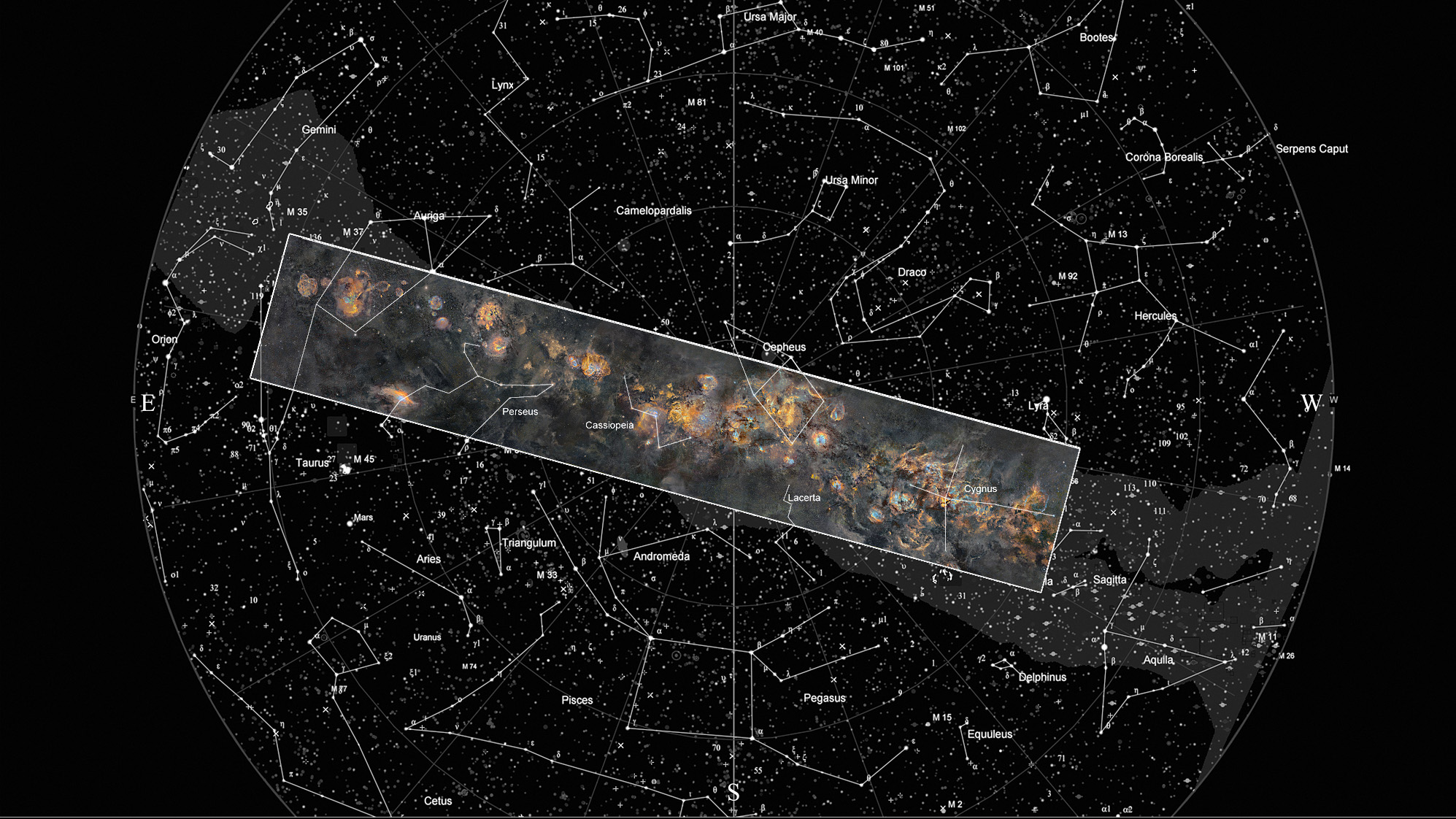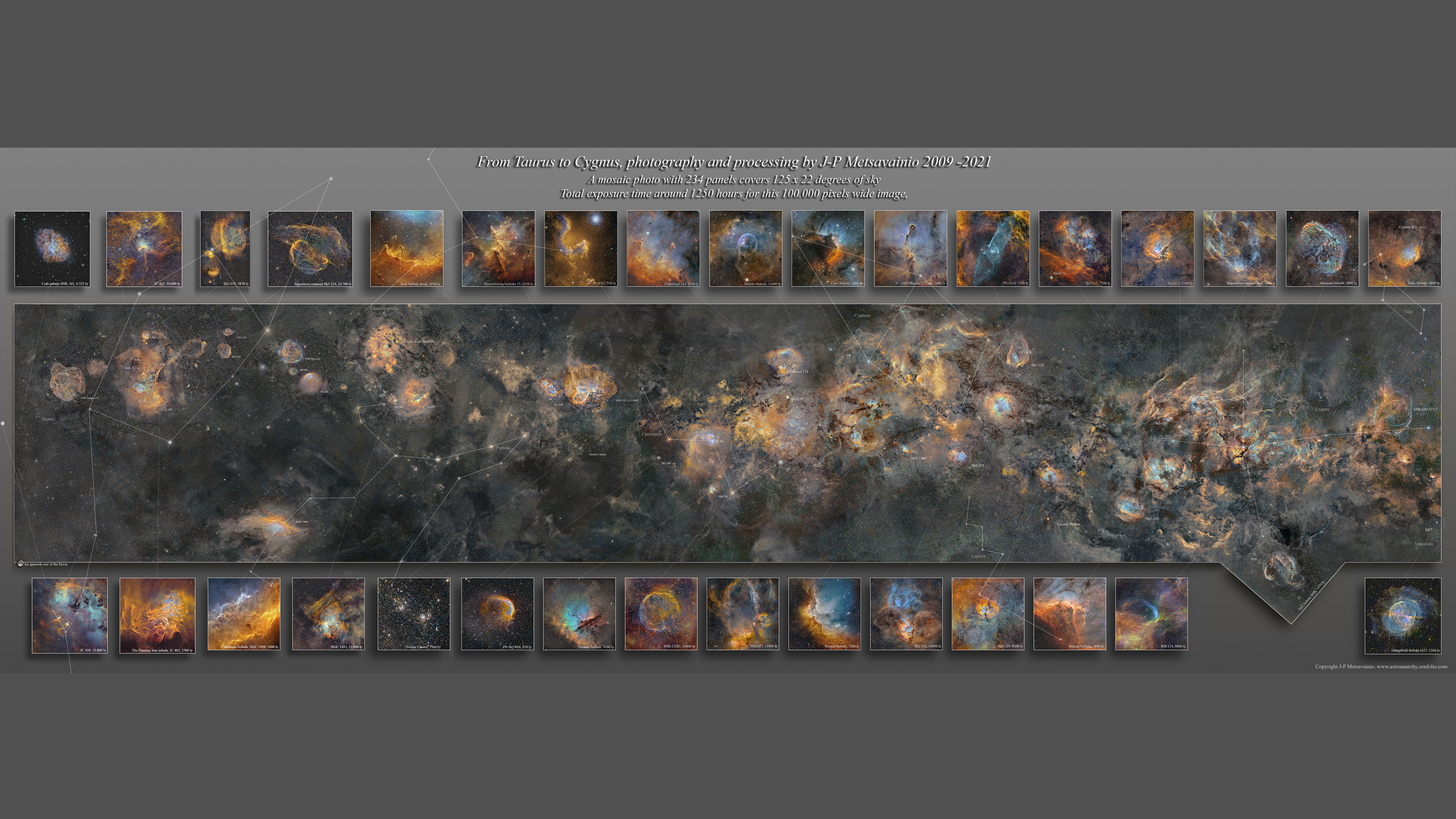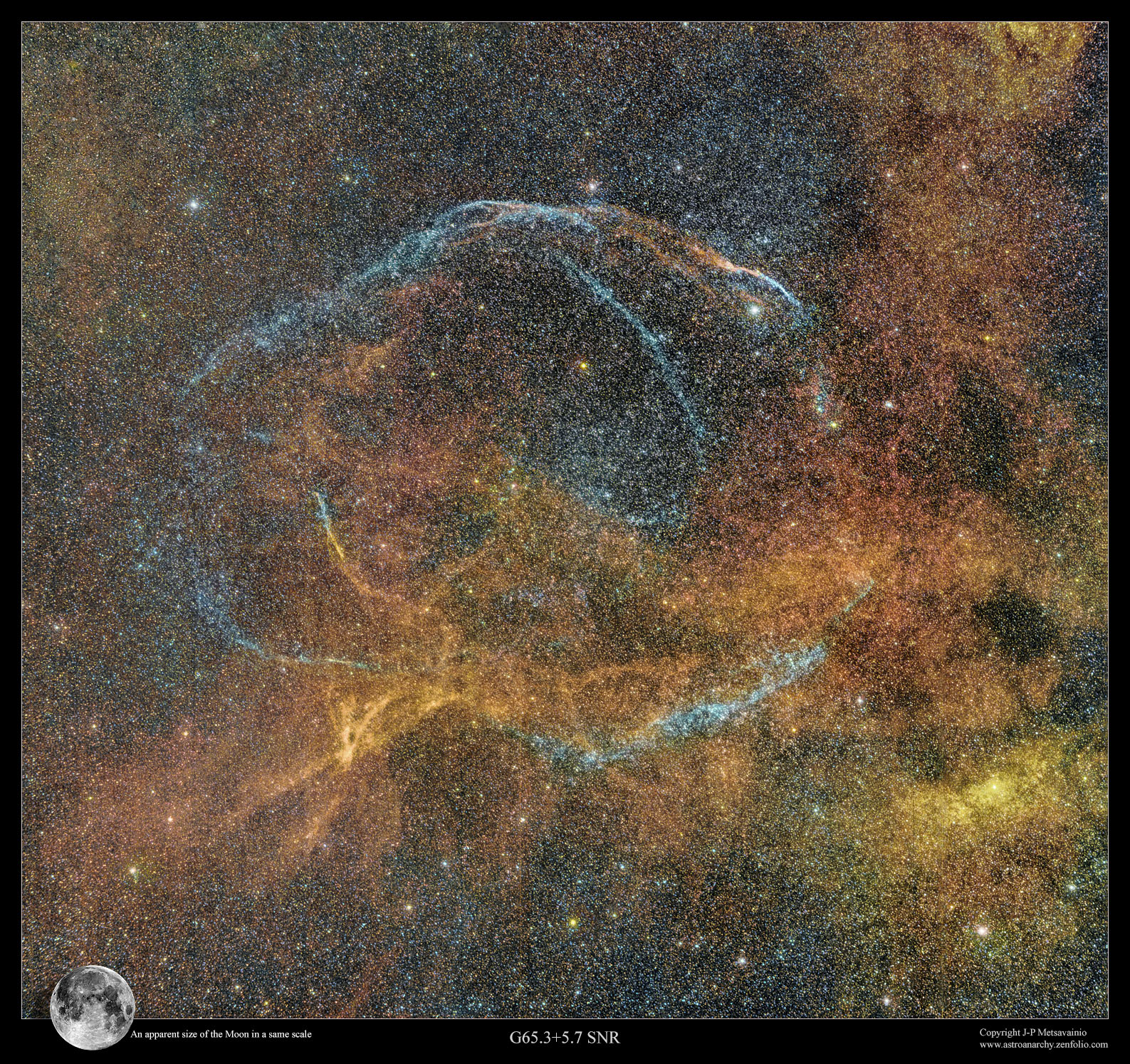Jaw-dropping Milky Way mosaic took 12 years to create. Here's why.

An eye-popping new image of the Milky Way took 12 years and 1,250 hours of photographic exposure to create.
The photo mosaic is the work of J-P Metsavainio, a Finnish photographer who specializes in astronomical imagery. Metsavainio shared his work on his blog, Astro Anarchy Observatory. The mosaic is 100,000 pixels wide, stitched together from 234 individual mosaic panels that cover 125 degrees by 22 degrees of the night sky.
When Metsavainio started the photographic process more than a decade ago, he knew he wanted to make a full Milky Way mosaic, he told Live Science. But each shot that makes up the mosaic was its own piece of art, he said.
"At the same time, I always kept in my mind the needs of the final large composition," he said.
Related: Spaced out! 101 astronomy images that will blow your mind
Metsavainio takes his photos from Finland. He began the project with a Meade LX200 GPS 12-inch telescope and a Canon EF 200-millimeter lens, later upgrading to a customized setup he calls "the Frankenstein monster," made of an Apogee Alta U16 camera and a Tokina AT-x 300-millimeter lens. He then blended the high-resolution images into a mosaic, using Photoshop. This is a complex process, he said, because the images are a mix of highly detailed long-focal-length frames (which magnify distant objects) and lower resolution short-focal-length frames (which provide a wider angle of view but less magnification).




By painstakingly merging these frames together, though, Metsavainio can create a mosaic that is both broad, covering the Milky Way as it looks stretched across the sky, and detailed. His favorite features, he said, are the extremely dim supernova remnants that his cameras managed to pick up. These leftovers from exploded stars can be photographed only by extremely long exposures, in which the camera lens is left open for hours at a time to allow enough light to shine through from the objects. One remnant, the Cygnus Shell, required 100 hours of exposure to photograph, Metsavainio said. Another, called G65.3+5.7, required 60 hours of exposure. These supernova remnants appear as light blue rings or bubbles amid brighter orange and yellow stars.
Sign up for the Live Science daily newsletter now
Get the world’s most fascinating discoveries delivered straight to your inbox.

The mosaic also contains images of nebulas, black holes and streams of gas. There are around 20 million stars in the mosaic, according to Metsavainio. The colors come from ionized, or charged, elements, with hydrogen represented in green, sulfur in red and oxygen in blue. Placed against the night sky, the mosaic would seem to stretch from the constellation Taurus through Perseus, Cassiopeia, Lacerta and Cygnus.
Next, Metsavainio plans to take more long-focal-length, highly magnified images of the night sky, using his Milky Way mosaic as a map for new compositions.
"As a visual artist," he said, "I like to give people a visual experience, even if they have no idea what they are looking at."
Originally published on Live Science.

Stephanie Pappas is a contributing writer for Live Science, covering topics ranging from geoscience to archaeology to the human brain and behavior. She was previously a senior writer for Live Science but is now a freelancer based in Denver, Colorado, and regularly contributes to Scientific American and The Monitor, the monthly magazine of the American Psychological Association. Stephanie received a bachelor's degree in psychology from the University of South Carolina and a graduate certificate in science communication from the University of California, Santa Cruz.









